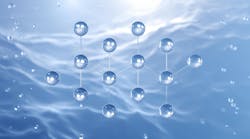The U.S. Environmental Protection Agency (EPA) finalized standards to protect billions of fish and other aquatic life drawn each year into cooling water systems at large power plants and factories. This final rule is required by the Clean Water Act to address site-specific challenges, and establishes a common sense framework, putting a premium on public input and flexibility for facilities to comply.
An estimated 2.1 billion fish, crabs and shrimp are killed annually by being pinned against cooling water intake structures (impingement) or being drawn into cooling water systems and affected by heat, chemicals or physical stress (entrainment). To protect threatened and endangered species and critical habitat, the expertise of the Fish & Wildlife Service and National Marine Fisheries Service is available to inform decisions about control technologies at individual facilities.
The final rule establishes requirements under the Clean Water Act for all existing power generating facilities and existing manufacturing and industrial facilities that withdraw more than 2 million gpd of water from waters of the U.S. and use at least 25% of the water they withdraw exclusively for cooling purposes. This rule covers roughly 1,065 existing facilities—521 of these facilities are factories, and the other 544 are power plants. The technologies required under the rule are well understood, have been in use for several decades and are in use at more than 40% of facilities.
The national requirements, which will be implemented through National Pollutant Discharge Elimination System (NPDES) permits, are applicable to the location, design, construction and capacity of cooling water intake structures at these facilities, and are based on the best technology available for minimizing environmental impact. The rule establishes a strong baseline level of protection and then allows additional safeguards for aquatic life to be developed through site-specific analysis, an approach that ensures the best technology available is used. It puts implementation analysis in the hands of the permit writers so requirements can be tailored to the particular facility.
There are three components to the final regulation.
- • Existing facilities that withdraw at least 25% of their water from an adjacent water body exclusively for cooling purposes and have a design intake flow of greater than 2 million gpd are required to reduce fish impingement. To ensure flexibility, the owner or operator of the facility will be able to choose one of seven options for meeting best technology available requirements for reducing impingement.
- • Facilities that withdraw very large amounts of water—at least 125 million gpd—are required to conduct studies to help the permitting authority determine what site-specific entrainment mortality controls, if any, will be required. This process will include public input.
- • New units at an existing facility that are built to increase the generating capacity of the facility are required to reduce the intake flow to a level similar to a closed cycle, recirculation system. This can be done by incorporating a closed-cycle system into the design of the new unit, or by making other design changes equivalent to the reductions associated with closed-cycle cooling.
Source: EPA


